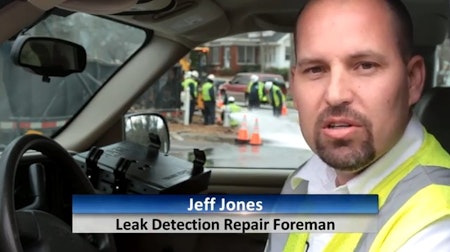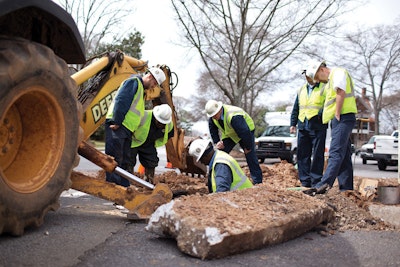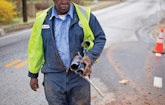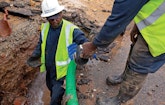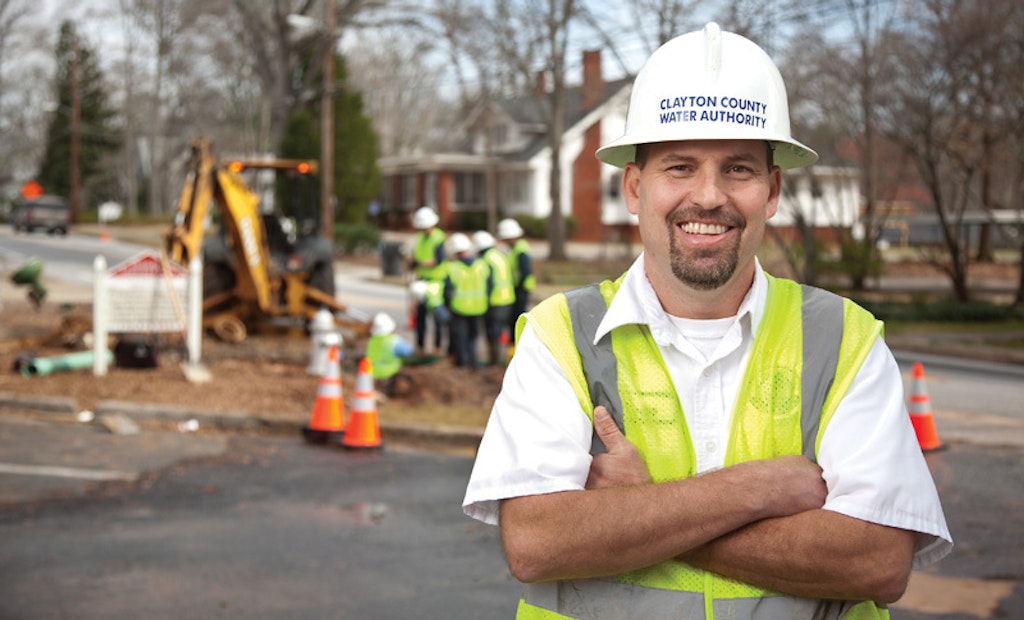Interested in Rehab/Relining?
Get Rehab/Relining articles, news and videos right in your inbox! Sign up now.
Rehab/Relining + Get AlertsAt the beginning of 2000, the Clayton County (Ga.) Water Authority discovered it had some significant water loss issues. A six-year leak detection scan of its entire 1,456 miles of water main found the system was losing a substantial amount of its water.
“Our board realized the costs associated with water losses and started looking for solutions,” says Jeff Jones, leak detection and repair foreman. “In examining the water loss, our board began summing it up in dollars and cents rather than a percentage.
“When we started to look at it that way, the loss was way up in the millions of dollars per year. Our board said, ‘Look, if this was a public company, we couldn’t operate losing that kind of money.’”
At that time, the county’s water loss was over 20 percent. In an increasingly water-scarce environment, that didn’t make sense. Today, after a three-pronged approach to water leak detection using acoustic technology, water loss is around 10 percent. In December 2010, it was 10.3 percent.
The authority has spent $1,237,700 on leak detection since 2000, for everything from salaries to equipment. Every dollar spent has led to $4.32 in production savings.
All told, the team has located and fixed some 600 leaks, saving more than $4.7 million in production cost (using the IWA/AWWA method of calculating the cost of producing the next thousand gallons of water over a 10-year period).
Right technology
The authority, which serves 270,600 people, started by checking all customers’ meters for leakage and then turned to the distribution system.
“You can leak detect one street today, but then you have to create a routine where you’re doing it all the time,” says Jones. The goal was to develop an all-inclusive, affordable leak detection program that would survey the entire system, instead of looking at just 250 miles of pipe per year, as in the past.
The board began researching options for leak identification and prevention and found some advanced weapons. As its first tool, Clayton County chose the DigiCorr digital correlator, made by Itron. The device uses computerized acoustics to pinpoint leaks by analyzing the pressure waves caused by leak turbulence inside pressurized pipes.
“Our main system is made up of a laptop computer and two units,” says Jones. “We can put the units on any two parts in the water system. The laptop listens between the two and gives you a measurement.”
The DigiCorr units can assess up to one mile of pipeline in about 15 minutes. The system uses synchronized vibrations between two points to pinpoint leaks to within about three feet. Itron also created digital images of maps and street plans in the authority’s service area. The entire water system is available, digitally overlaid on the maps.
When the DigiCorr units made a big difference, the authority also purchased ZCorr digital correlating loggers (Itron). These units work during the night to isolate the exact locations of leaks in a single surveillance. Utility staff members place the loggers 400 to 4,000 feet apart, usually on valves and fittings, to pinpoint the exact locations of any leaks with the defined coverage area.
Permanent system
The third part in Clayton County’s leak repair program got rolling in 2008 with the MLOG system from Itron, a network of smart leak-detecting sensors installed on customer service lines before the box, at about every tenth meter. Data from the sensors is collected daily and sent to a Web interface, where the numbers are interpreted and added to historical records to track leakage and the fixes.
The acoustic sensor technology and sophisticated sound analysis software gave Clayton County a permanent, maintenance-free leak detection solution across the entire water distribution system all year long, eliminating the need for walking surveys.
“The sensors have a little controller, and when we drive by the unit, it reads the information and uploads it back to the computer,” says Jones. “If you’ve got a leak anywhere, it will tell you.” The authority has placed the sensors an average about 500 feet apart all across certain parts of the system. They can be read every day, every week, or every month, and it takes no special training to read them.
Jones sees many benefits to the constantly updating system. “MLOG lets us find a leak before it gets big,” he says. “Before, it took us about six years to go through the system, touching every line. With the MLOG, we could do it every day if we wanted.”
In reality, the authority usually surveys the system about every two weeks. “We do a drive-by where we read the MLOG data and then put the leaks on the list to get repaired,” Jones says.
The system sets up a historical database where the pipes have ratings that are stored permanently. “We can go back and see the day the leak started and the day it was fixed,” says Jones. That way, the county can track how frequent and severe leaks are in different parts of the system.
Dedicating resources
The leak detection system practically paid for itself on the very first day it was in place. “We actually found a leak right in front of a home that belonged to someone on the board of directors, and it was a big one,” says Jones. “On average, we are finding about 70 leaks per year.”
Jones believes no technology works without the right people using it. “Our manager, Herbert Etheridge, was adamant that we needed to dedicate people to do leak detection, and only leak detection,” he says. “We started and the board of directors was 100 percent behind it.” Six people now work on the system: two in leak detection, and four in leak repair.
There aren’t many young water systems in American towns and cities, and Jones says dedicated leak detection has to be the way of the future. “I think a lot of water systems are getting on in age, and as water goes higher in price, it’s going to be that much more important to get involved in leak detection,” he says.
Clayton County lends a hand to smaller communities that want to get on board with leak detection, and Jones gives talks on how to use the digital systems to be proactive about leaks.
After the initial 585 sensors were deployed in the 2008 MLOG system, they helped identify leaks totaling 54,662,400 gallons per year, at a cost of about $40,996.80 (again using the IWA/AWWA method of calculating).
Jones sees more work ahead. “We have a few more MLOGs to put out — we’re hoping to put them out in the next months,” he says. An additional 950 MLOG units are being deployed this year in Jonesboro and Forest Park, parts of Clayton County with some of the oldest infrastructure. When all the sensors are in place, the authority will be able to do a complete leak study twice a month.
Jones says the meter reading technology is changing from a manual reading system to an automated meter reading drive-by system.
He believes it’s a good thing when the public sees water officials taking readings, because people then are more likely to call if they spot a leak. The authority looks forward to more leak intelligence coming from consumers.
“Our water loss is kind of funny because we had it down around 6 percent and then it started easing back up,” said Jones. “But we’ve reduced what we produce, so that makes our water loss actually creep back up as a percentage of production.”
Still, the ability to use digital technology to find pinhole-sized leaks before they turn into gushing breaks continues to shape the future of water and in a time of supply constraints it’s the right thing to do for future sustainability.
